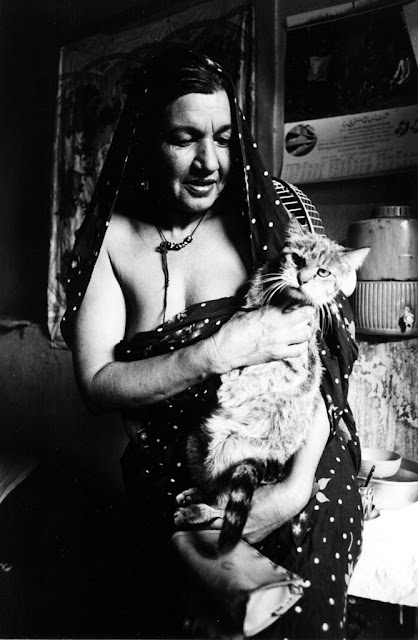The Citadel was an old neighborhood of filthy alleyways in Tehran that was established in the 1920s as a red-light district to house scores of prostitutes. In the 1930s and 1940s, the neighborhood became a thriving sex quarter with rampant crime. Female prostitutes walked the streets seminaked. One of the side streets became famous for its young male prostitutes.
After the 1953 C.I.A.-led coup that reinstated the shah, the authorities walled off the area, turning it into a ghetto whose inhabitants were almost exclusively female prostitutes and their children; only men were allowed to access it through an iron gate.
By the 1970s, about 1,500 prostitutes worked, and most of them lived, in the Citadel. Their daughters often followed them into prostitution; their sons often turned to drugs. Sometimes men came for sex, sometimes to drink, do drugs, watch films or sightsee.
In the ghetto, there was a health center, a police station, a social-work office and a crude education service that taught basic reading and writing to women and their children. But the women suffered — from poverty, violence, heroin addiction, syphilis and destitution when they became too old to work.
From 1975 until 1977, Iranian photojournalist Kaveh Golestan captured the lives of the women in the Citadel. Although primarily known for documenting war and conflict in the Middle East, Golestan’s project involving these women gives light to a different issue, one that has not seen the spotlight in years if not never in Iranian society.
After the 1953 C.I.A.-led coup that reinstated the shah, the authorities walled off the area, turning it into a ghetto whose inhabitants were almost exclusively female prostitutes and their children; only men were allowed to access it through an iron gate.
By the 1970s, about 1,500 prostitutes worked, and most of them lived, in the Citadel. Their daughters often followed them into prostitution; their sons often turned to drugs. Sometimes men came for sex, sometimes to drink, do drugs, watch films or sightsee.
In the ghetto, there was a health center, a police station, a social-work office and a crude education service that taught basic reading and writing to women and their children. But the women suffered — from poverty, violence, heroin addiction, syphilis and destitution when they became too old to work.
From 1975 until 1977, Iranian photojournalist Kaveh Golestan captured the lives of the women in the Citadel. Although primarily known for documenting war and conflict in the Middle East, Golestan’s project involving these women gives light to a different issue, one that has not seen the spotlight in years if not never in Iranian society.



























.jpg)